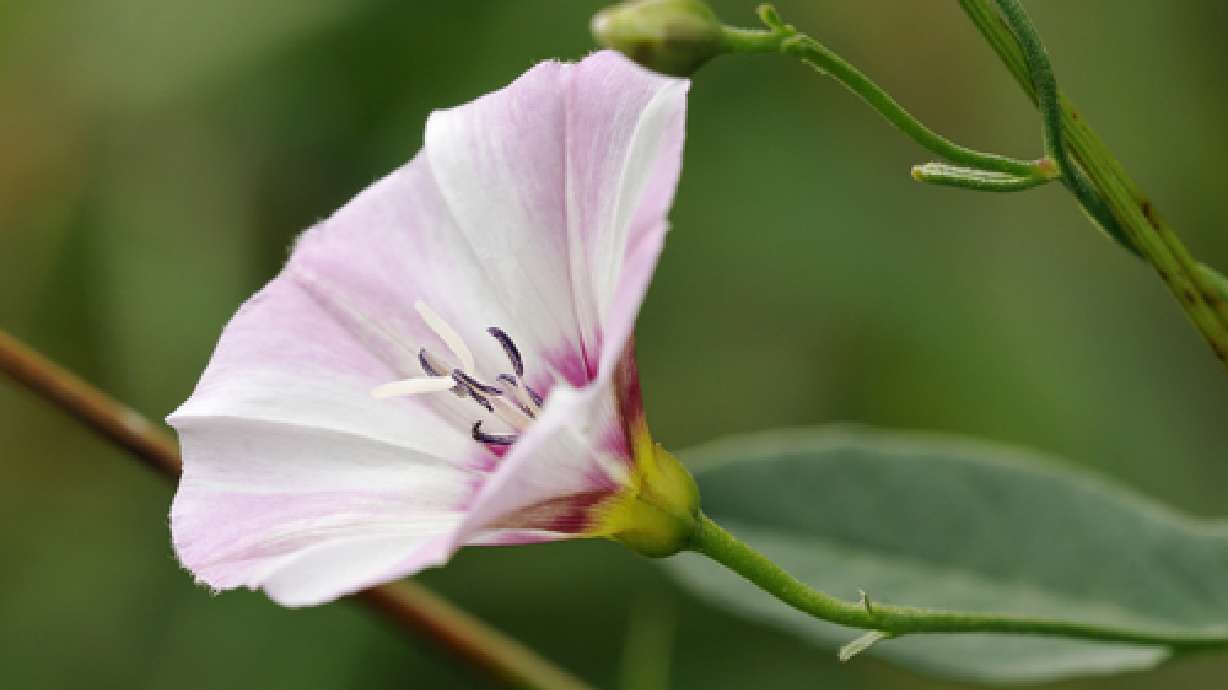Estimated read time: 2-3 minutes
This archived news story is available only for your personal, non-commercial use. Information in the story may be outdated or superseded by additional information. Reading or replaying the story in its archived form does not constitute a republication of the story.
Field Bindweed
One of the worst weeds to invade the American West is field bindweed, also commonly but incorrectly known as morning glory. There is nothing glorious about it. It is a vining, perennial plant that sends roots 30 - feet deep and spreads from both seeds and root runners. It flowers and produces seeds from late spring to mid fall.
There are a couple of non-chemical solutions that are moderately successful in eradicating bindweed. One includes complete removal of seedlings just as they emerge from the soil. New plants lack the ability to produce runners that generate other new plants for the first 3 to 4 weeks of life.
In areas where field bindweed is established, shallow cultivation or pulling is an option. However, this must be done without fail every 2 to 3 weeks, as plants reach about 6-inches long, to be effective and must be repeated for 2 to 7 years to successfully eliminate an infestation. Smaller infestations can be covered with black plastic sheeting or landscape fabric. After laying the mate rial out, place 2 to 3 inches of mulch on top to eliminate light penetration. Another similar method involves covering with overlapping cardboard pieces, then placing several inches of mulch over the cardboard.
For either of these to be successful, the cover must be placed a couple of feet beyond where the bindweed stops and any runners and seedlings that appear on the outside edge of the treated area must be immediately removed. Additionally, the cover and mulch must be left in place from 1 to 5 years. For those using cardboard, it should be replaced annually. Periodic, small additions of mulch may also be needed for either method to eliminate light penetration.
For those choosing to use herbicides, a combination of pre- and post-emergent products in combination with other management practices is a good option. Pre-emergent products kill newly germinated plants. A couple of common products labeled for use on the lawn included ythiopyr and prodiamine. Another that is useful in vegetable gardens is treflan.Any of these or other pre-emergent products may require reapplication for season-long control.
Common post-emergent herbicides include glyphosate (Roundup-type products) and lawn-weed killers (Weed-B-Gone-type products). For best results, apply in early autumn after frost but while vines are still green. Glyphosate is non-selective and should be used in open fields and other areas without desirable plants such as turf, flowers, shrubs and trees. To improve its effectiveness, mix glyphosate with 2, 4-D or another general lawn-weed killer.
Of the chemical control options available, recent research from weed scientist Richard Zollinger and others from the University of Minnesota suggests that products containing Quinclorac offer superior control. They obtained 99 percent control after 1 year of use. After 3 years and no further applications, the bindweed was still controlled at the 90 percent level.
Zollinger mentioned that, in his experience, Quinclorac was among the best chemical control options. In the homeowner market, Quinclorac is a common ingredient of lawn-weed killers additionally labeled for crabgrass control.








